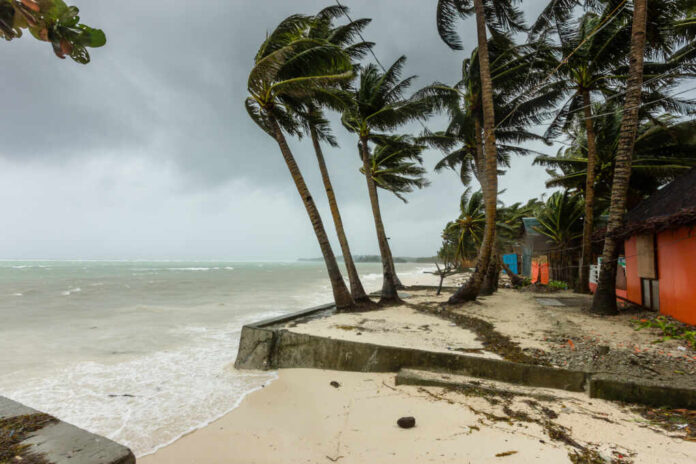
Super Typhoon Ragasa threatens global economic stability, sparking concerns about supply chain resilience among conservatives.
Story Highlights
- Ragasa is the most intense tropical cyclone of 2025, impacting East Asia.
- Severe disruption to global semiconductor and shipping supply chains.
- Hong Kong issues Hurricane Signal No. 10 twice in one year, first since 1964.
- Massive humanitarian impact with millions evacuated and infrastructure collapse.
Unprecedented Storm Impact on Asia
Super Typhoon Ragasa, the most powerful tropical cyclone of 2025, has wreaked havoc across East Asia. Striking the Philippines, Taiwan, Hong Kong, and southern China, the storm has caused catastrophic damage. With extreme winds and torrential rains, Ragasa has led to widespread flooding, infrastructure collapse, and significant loss of life. Millions have been evacuated, and critical industries such as semiconductors and shipping have come to a standstill, threatening global economic stability.
The storm’s unprecedented intensity has drawn comparisons to past typhoons like Mangkhut in 2018, but Ragasa’s impact is considered more severe. Hong Kong issued the Hurricane Signal No. 10 twice this year, a first since 1964, highlighting the storm’s exceptional strength. The disaster’s timing, coinciding with China’s Golden Week holiday, has exacerbated logistical challenges, further straining already stressed supply chains.
Watch: Super Typhoon Ragasa slams China’s southern coast, causing widespread power outages
Global Supply Chain Disruptions
The typhoon’s path through major economic hubs has led to severe disruptions in the semiconductor and electronics industries, central to Taiwan and southern China. With ports in Hong Kong, Shenzhen, and Guangzhou closed or partially operational, global shipping delays are mounting. Industry leaders warn of prolonged supply chain disruptions, especially in semiconductors, already strained by past shortages. This situation underscores the need for resilient systems to withstand such global threats.
Supply chain analysts predict that Ragasa’s impact could exacerbate existing chip shortages, driving up prices and affecting the global electronics and automotive industries. The storm’s aftermath highlights the vulnerabilities in the current supply chain model, prompting calls for diversification to mitigate future risks. Industry stakeholders are pressing for government intervention and support to resume operations and minimize economic fallout.
Humanitarian and Economic Consequences
As recovery efforts begin, the human toll of the disaster is becoming clear. The death toll stands at least 27, with hundreds injured and dozens missing. The extensive infrastructure damage, power outages, and flooding have left communities in northern Luzon, Taiwan, Hong Kong, Guangdong, and Guangxi reeling. Governments have declared states of emergency, mobilizing resources for relief and recovery.
Economically, the impact of Ragasa extends beyond immediate disruptions. Increased insurance claims and economic losses could exceed US$100 million, with long-term implications for industries dependent on global supply chains. The storm has reignited debates on climate adaptation and disaster preparedness, pressuring governments to prioritize infrastructure resilience and effective disaster management strategies.
Sources:
Super Typhoon Ragasa Brings Chip Industry to a Standstill
Typhoon Ragasa

























